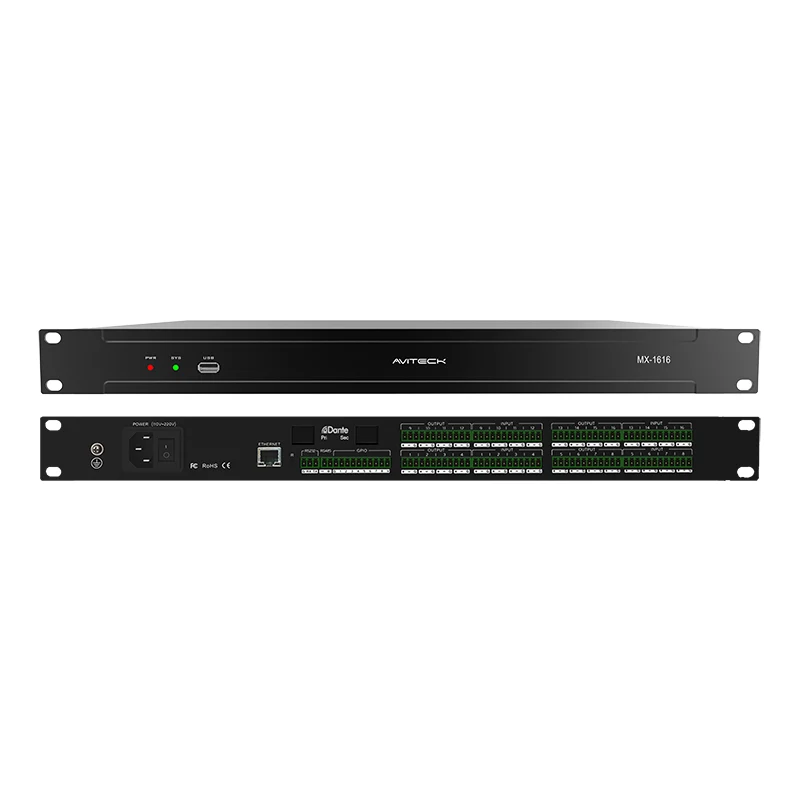
- English
- Español
- Português
- русский
- Français
- 日本語
- Deutsch
- tiếng Việt
- Italiano
- Nederlands
- ภาษาไทย
- Polski
- 한국어
- Svenska
- magyar
- Malay
- বাংলা ভাষার
- Dansk
- Suomi
- हिन्दी
- 繁体中文
- العربية
- Indonesia
- فارسی
- Eesti Keel
- Srpski језик
- Afrikaans
- icelandic
- беларускі
- Hrvatski
- ភាសាខ្មែរ
- ქართული
- Maori
- Тоҷикӣ
- O'zbek
- Հայերեն
- Lietuvos
- שפה עברית
- Pilipino
- Türkçe
- Gaeilge
- Norsk
- český
- ελληνικά
- український
- български
- ລາວ
- Latine
- Қазақша
- Slovenský jazyk
In-depth understanding: the functions and advantages of digital audio processors.
2025-10-13
Audio processing is an audio processing device that we often use when using many large electronic devices. It can help us control music or soundtracks to produce different sound effects in different scenes, increase the impact of music or soundtracks, and at the same time control many audio functions on the scene.

Digital Processor
Audio processors, also known as digital processors, process digital signals. Their internal structure generally consists of an input and output section. Some processors have more comprehensive internal functions, and some include drag-and-drop programmable processing modules, allowing users to freely build their own systems.
Generally speaking, an audio processor is a series of audio devices that modify, process, and manipulate audio signals.
Audio processors can meet a wide range of application needs.
Audio processors convert multi-channel analog input signals into digital signals and then apply a series of tunable algorithms to these digital signals to meet application requirements such as improving sound quality, matrix mixing, noise reduction, echo cancellation, and feedback elimination. They then output the multi-channel analog signals through digital-to-analog conversion.
The internal architecture of a typical digital processor generally consists of an input section and an output section. The audio processing section generally includes the following functions: The input section typically includes input gain control, input equalization (parametric equalization) adjustment, input delay adjustment, and input polarity switching. The output part generally has several common functions such as signal input distribution routing selection, high-pass filter (HPF), low-pass filter (LPF), equalizer (OUTPUT EQ), polarity, gain (GAIN), delay (DELAY), and limiter start level (LIMIT).
The difference between audio processor and speaker processor
Speaker processor: It can also be called speaker distribution matrix. Similar to the audio matrix, it is mainly used to distribute a signal to multiple amplifiers for use.
| Product Type | Speaker Processor | Audio Processor |
|---|---|---|
| Specification Type | 2-in, 2-out; 2-in, 4-out; 3-in, 6-out; 4-in, 8-out | 4-in, 4-out; 8-in, 8-out; 12-in, 12-out; 16-in, 16-out |
| Mixer Requirement | Requires a mixer at the front | Can have a mixer or not, both work |
| Function | Relatively simple internal functions, including parametric equalization, crossover, delay, mixing, matrix, etc. | More comprehensive internal functions, may include a draggable programming module for users to freely build their system |
| Application Scenario | Used in professional audio systems to correct speaker quality; small venues, and smaller audio systems; specifically for backend speaker parameter correction | Used in more complex audio systems for customized processing and building a free system, with more extensive application scenarios |



